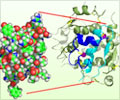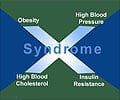Results from a large-scale study that uses saliva as a tool for identifying children who are at risk for developing type 2 diabetes has been announced by scientists.

"The importance of prevention is obvious, and to truly be preventative, we must focus on children," said Dr. Max Goodson, Senior Member of Staff in the Department of Applied Oral Sciences at The Forsyth Institute and Director of the Kuwait Healthy Life Study. "This study is exciting because non-invasive methods are critical when dealing with children. Salivary diagnostics could provide a more acceptable alternative, which could create a new paradigm for research in preventive health."
Overview of Study This study, "Metabolic Disease Risk in Children by Salivary Biomarker Analysis," will be published in the PLOS ONE on June 10, 2014 and available at: dx.plos.org. The team of researchers evaluated metabolic differences in 744 eleven-year old children who were a combination of normal weight, underweight, overweight and obese. Saliva samples were taken after fasting and analyzed for 20 biomarkers. Four salivary biomarkers were found to change significantly with increasing obesity: insulin, c-reactive protein (CRP), adiponectin and leptin. These results suggest that obesity may be characterized and classified by salivary biomarker concentration. Use of these relatively non-invasive markers, particularly in longitudinal studies, to investigate the development of metabolic diseases in children and to evaluate therapeutic interventions, could be used to develop prevention strategies.
This study was led by Dr. Max Goodson, Senior Member of Staff at The Forsyth Institute. The work was done in collaboration with colleagues in the Forsyth Department of Applied Oral Sciences including: Drs. Pramod Soparkar, Alpdogan Kantarci, Mor-Li Hartman, Hatice Hasturk, Xiaoshan Wang; MaryAnn Cugini, RDH, MHP; Tina Yaskell, BS, Biology; Danielle Stephens, MS, Biomedical Forensic Sciences; and Jorel Vargas, BS, Behavioral Neuroscience; Dr. Francine Welty, Beth Israel Deaconess Medical Center; Dr. Gerald Denis, Boston University; Dr. Roula Barake, Dr. Kazem Behbehani and Dr. Osama Alsamada, the Dasman Diabetes Institute of Kuwait; Dr. Sabiha Al-Mutal and Dr. Jitendara Ariga, the Kuwaiti Ministry of Health; and Dr. Jawad Behbehani, Kuwait University.
Dr. Goodson leads The Kuwait Healthy Life Study, (KHLS), a longitudinal cohort investigation of more than 8,000 children. The KHLS builds upon Forsyth's 30-year partnership with Kuwait that helps to provide dental care to approximately 225,000 schoolchildren. Responding to a concern that originated from leaders in Kuwait, this KHLS was designed to capture all the essential data needed to predict those children at greatest risk of developing metabolic syndrome and type 2 diabetes using saliva as a blood surrogate and tablet computers as data capture devices. This program, which also includes research and education, offered an ideal setting for a longitudinal health study which is now entering its fourth year.
Source-Eurekalert











